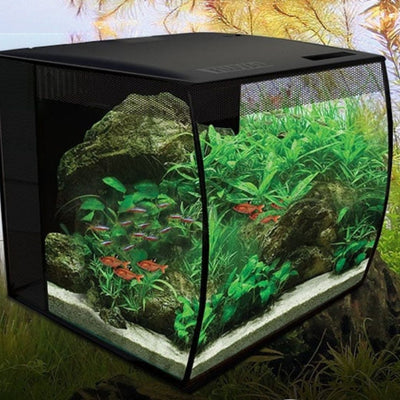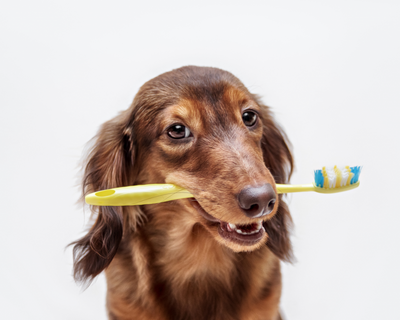
Whether or not you should let your dog sleep on your bed is a matter of personal preference. For some pet owners, cuddling up to their canine companion at night brings feelings of warmth and comfort. But for others, allowing a four-legged friend in the bed can create unwanted anxieties or night disturbances.
Pros & Cons of Letting Your Dog Sleep on Your Bed.
Every pet parent needs to weigh the pros and cons of letting their pup sleep on a bed before deciding if it’s right for them. On one hand, sharing your bed with your furry friend can create a stronger bond between both of you and provide feelings of comfort and security at night. But on the other, allowing your canine companion in the bed can cause anxiety, night disturbances, or hygiene concerns. A study The Effect of Dogs on Human Sleep in the Home Sleep Environment having a dog in the bedroom sleeping with you may not be as bad as we once thought! Again, this is a personal choice! Participants in the study that had their dog sleeping on their bed had low scores compared to those who just had the dog sharing the same room.
Health Benefits & Risks of Sharing Your Bed with Your Dog.
Though sleeping with your dog can bring some health benefits, it is important to consider the potential risks as well. For instance, if you or your pet has allergies, sharing a bed can be a problem. Also, pet dander and dust collected on your bed and duvet can not only trigger an allergic reaction but may also lead to skin irritation.
When deciding whether or not to let your dog sleep on the bed, you should consider if it is the best option for their joint health. Arthritis and other musculoskeletal conditions can make climbing on the bed difficult, so providing a padded surface that is closer to the ground may be more comfortable. However, if your dog is an older one, they may struggle with incontinence; wetting your sheets with an accident can be quite unpleasant.
Furthermore, pets that have fleas or ticks could cause these pesky pests to quickly spread throughout the household. Lastly, another thing pet owners should worry about is hygiene. Pet hair in bedding creates a bacteria-friendly environment which could easily transfer onto your own bedding and clothing.
Would my Dog prefer to Sleep on my Bed or would they be more comfortable in their own?
If your dog is a restless sleeper or tends to get too hot, it might be more comfortable for them to sleep at ground level on their own bed. Also, if you are a restless sleeper, you may disturb your dog's slumber when they're in the same bed as you. Ultimately, it is up to you and your pet's comfort level.
Browse our range of comfortable dog beds that will ensure that Fido gets a good nights sleep, no matter where you position their bed!
Best Beds for Your Dog's Sleeping Position
Dogs that sleep on their sides are most comfortable on a rectangular dog bed. A supportive rectangular or hammock-style bed works best for these dogs. Choose the level of support according to your dogs age and health.
Dogs that sleep curled up tightly appreciate the added protection of a  circular dog bed with raised sides. These provide dogs with a sense of security as well as warmth and support. The curled-up sleeping position can often indicate that your dog is a little more cautious about its surroundings. These dogs benefit from sleeping in a circular, nest-style dog bed. These beds often referred to as 'anxiety beds' are designed to be a tight fit to provide comfort & security to dogs. This is also a position that dogs use to warm themselves in cooler weather.
circular dog bed with raised sides. These provide dogs with a sense of security as well as warmth and support. The curled-up sleeping position can often indicate that your dog is a little more cautious about its surroundings. These dogs benefit from sleeping in a circular, nest-style dog bed. These beds often referred to as 'anxiety beds' are designed to be a tight fit to provide comfort & security to dogs. This is also a position that dogs use to warm themselves in cooler weather.
Dogs that sleep on their stomachs find this to be a comfortable position during hot weather when dogs are trying to cool their core body temperature on a cool surface such as tiles. Cool mats & flat, rectangular beds are the best bedding for dogs who sleep in this position.
Dogs that sleep on their back: If your dog sleeps this way, it can indicate a very chilled-out dog that feels comfortable & unthreatened. This carefree position leaves dogs in a vulnerable situation as it would take considerably longer to get to the four paws quickly. An orthopedic rectangular shaped mattress is recommended for this sleeping style.
Tips For Ensuring a Good Night's Rest With your Dog in the Bed.
If you decide to share your bedroom with your pet, there are some steps you can take to ensure that both of you get a good night’s rest. First of all, invest in a good quality mattress protector that is specifically designed for pet owners. It should be able to withstand your pet's claws and possibly even an accident or two. Additionally, considering getting washable or hypoallergenic dog bedding which can easily be removed and cleaned after every use. Lastly, regular grooming and checking for parasites will help keep your canine companion healthy and happy - and will also add an extra element of protection when it comes to hygiene!
Preparing the Bedroom for Comfortable Sleeping.
When preparing your bedroom to accommodate co-sleeping with your furry friend, there are a few steps that can make it easy and comfortable for both of you. Make sure that they have their own bed set up nearby or on the actual bed itself so they have a designated space of their own. Additionally, look for ways to reduce allergens in the air—such as using an air purifier or air filtering devices like mattress covers and hypoallergenic sheets. Finally, check for any hazards in the bedroom that could potentially harm your pup—such as things that may topple over when they jump on the bed or small objects left within reach where they might chew them.
Maintaining Bedtime Routines and Boundaries for a Happy Co-Sleeping Buddy.
It's important to set clear boundaries for your pup by establishing a bedtime routine. On the days that your pup is allowed on the bed, you can make them feel even more welcome with a few simple steps! Prioritise giving them affection and positive reinforcement as you transition from activity time to cuddle time—such as offering treats or a toy. Additionally, you should keep their surroundings soothing and calm, so that they are able to relax and eventually drift off into a deep sleep. Once your pup has settled down to sleep, refrain from further petting or play for the remainder of the night.
© weknowpets 2023






